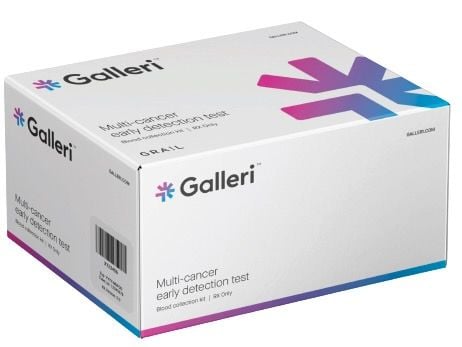As a scientist, I’m excited to have tools like the Galleri test to detect cancer earlier, as that sheds light on the origins and the progression of the disease.
Cancer is considered a disease of the genome, which is why genomic research is central to GRAIL’s operations. Each cell has machinery that protects and keeps the DNA blueprint pristine. In cancer, that machinery starts to get corrupted, and then these glitchy cells overgrow and evade the body’s natural cleanup and turn cancerous.

It comes down to two simple principles that underlie the Galleri test: DNA shedding and methylation.
So, what’s DNA shedding? All cells in the body shed small amounts of DNA into the bloodstream as they die, and this is happening all the time. And cancer cells, if present, also release DNA, so you end up with a mixture of DNA in the blood.
Now, how do you know if the DNA came from a cancer cell or a healthy cell? That’s where methylation comes in. All living cells — from bacteria to squids, Komodo dragons, human beings and pine trees — selectively mark their DNA at certain locations, which signals which sections of the DNA to turn on or off. In cancerous cells, methylation becomes abnormal. Methylation patterns also contain information about the tissue type or organ associated with the cancer signal to help healthcare providers determine next steps.
Data Drives Progress
GRAIL is currently conducting a study in conjunction with the U.K.’s National Health Service. The company has enrolled more than 140,000 people from a wide range of demographic and socioeconomic backgrounds to gauge the test’s effectiveness in accurately identifying cancer. Singh explained that the company uses the large data sets from trials, such as this one, to refine future versions of the Galleri test. “The more data you have, the better the method gets,” she said.
There are four major single cancer screens for breast, lung, cervical and colorectal cancer recommended as standard of care in the United States, and most of these screening tests are looking for some type of abnormal cell, either visually through imaging or from a tissue sample.
The Galleri test is different in that it’s not looking for specific cells. You don’t have to either look at cells through an imaging modality or take cells out of the body. It’s actually just looking for this abnormal DNA that’s shed in the blood. And because the blood circulates throughout the body, you can gather information from all over the body through the blood, so you don’t have to look at this particular organ or that particular organ.
“The Galleri test is different in that it’s not looking for specific cells. It’s actually just looking for this abnormal DNA that’s shed in the blood.”
The four cancers that I mentioned already have well-recommended screening guidelines, and they continue to be screened in that way. But the Galleri test detects a cancer signal shared by more than 50 cancer types including more than 45 cancers that do not have recommended screening. Galleri is noninvasive, used in addition to recommended cancer screening, and if a cancer signal is detected, needs to be followed up by a doctor for an actual diagnosis.
Before there were tests like this, cancer was typically diagnosed at much later stages when symptoms presented. That limits what you can observe about the cancer, because you’re at the moment of diagnosis or after, and your observations of that person or that patient may not generalize. And therefore, the way that you treat it and how well your treatment will work in other individuals may also not generalize.
I’m very excited to see the whole progression of cancer rather than a narrow, late slice of it, because then we can learn more about the disease, which will lead to more timely and effective treatments.
Like many others, I had a family member who was diagnosed with cancer and passed away last year. I remember thinking to myself when I was considering joining GRAIL, ‘If I can help even one family not go through what my family just went through, by finding cancer early when it can be cured, what better way is there to spend my time?’ I’m very excited to be here and contribute to this mission.





